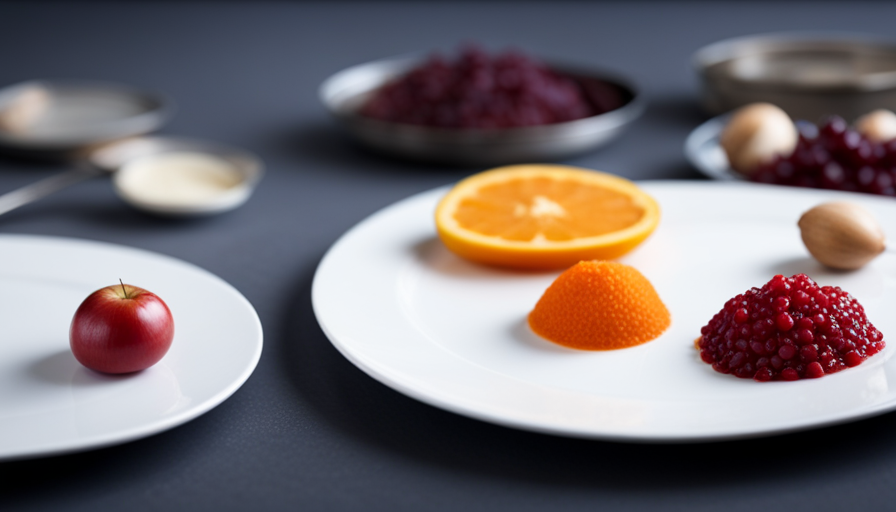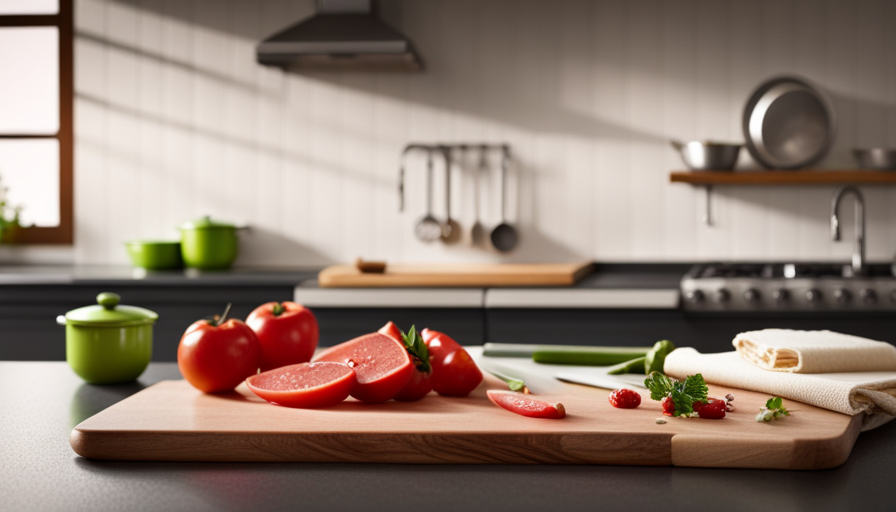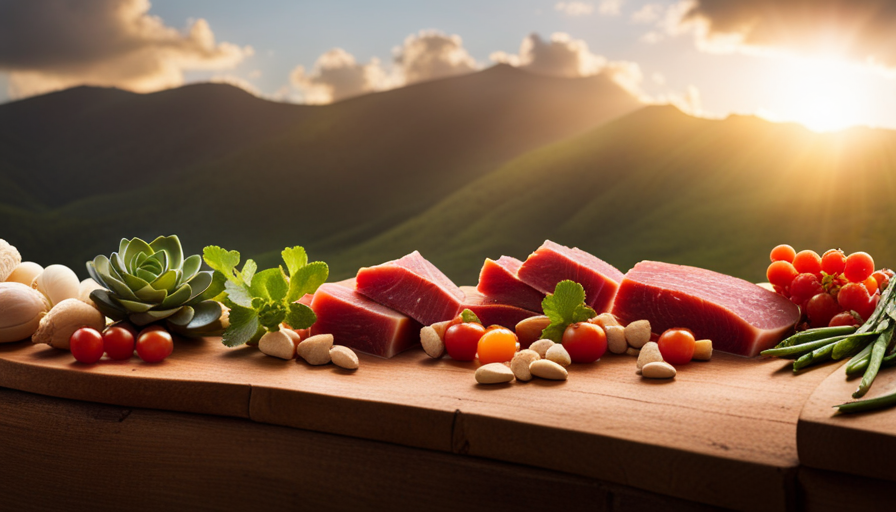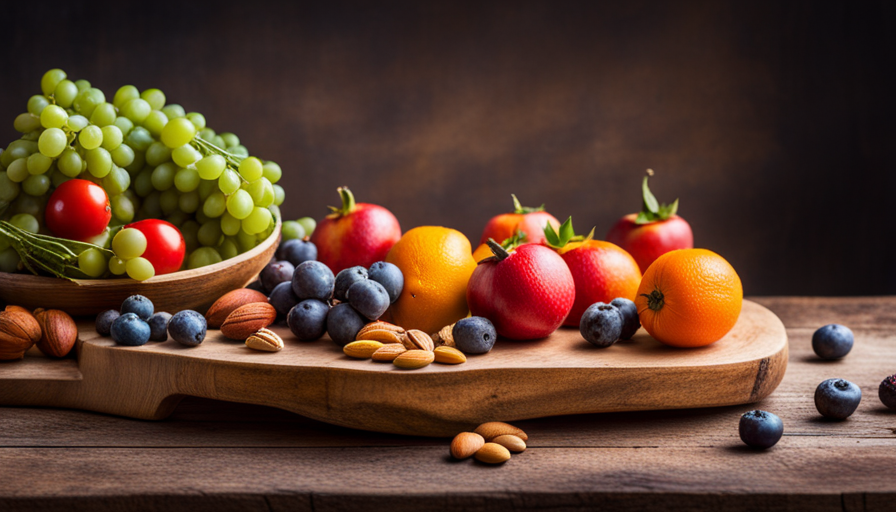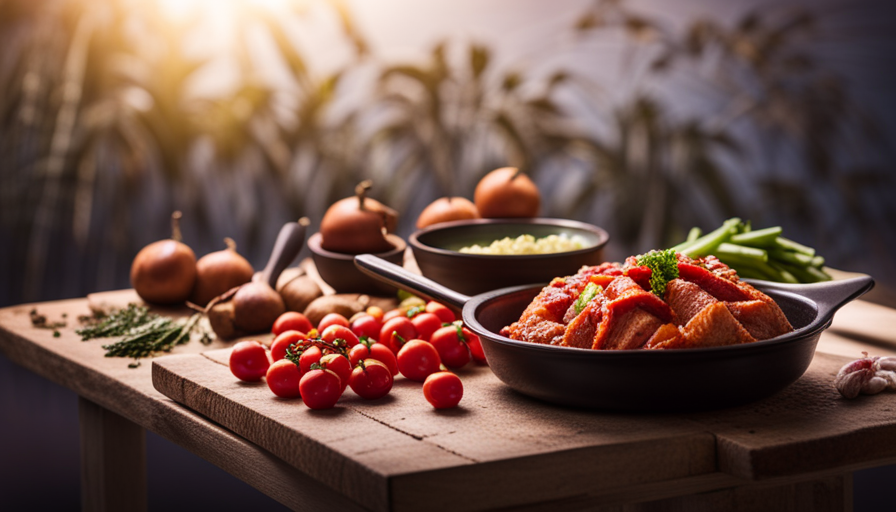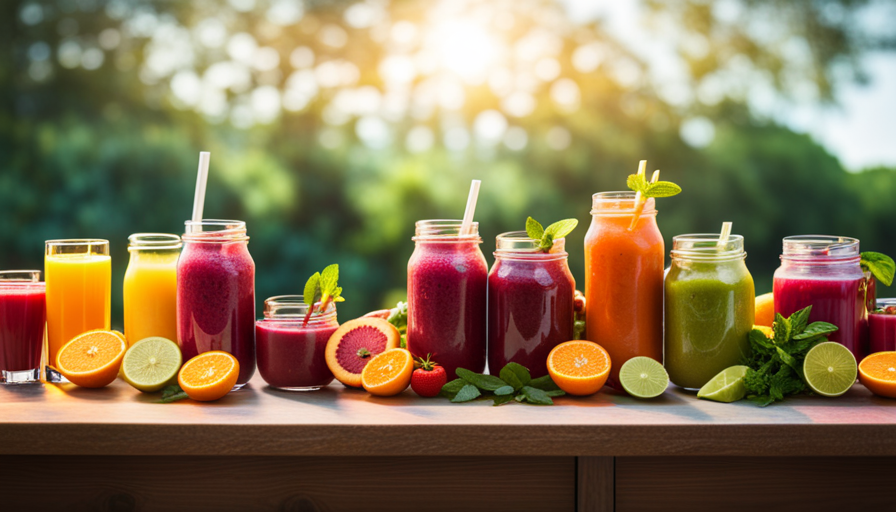Should you measure your food before or after it’s been cooked? This is a common question among those who are conscious of their health and trying to keep a balanced diet. We are aware that cooking can change the flavor and consistency of our food, but what about its nutritional value? Do we lose or gain nutrients when we cook our food? These are crucial considerations when it comes to controlling portion sizes and making informed choices about our meals.
In this article, we will explore the nutritional changes that occur in cooking, the accuracy of measuring portion sizes when raw or cooked, and the factors that influence nutrient retention. We will also provide practical tips on how to measure food when it’s cooked and how to adjust portion sizes based on different cooking methods.
So, let’s dive in and discover the best approach to measuring our food for a healthy and balanced diet.
Key Takeaways
- Measuring food when it’s raw is important for maintaining a balanced diet and accurately assessing nutritional content.
- Different cooking methods have varying effects on nutrient preservation, so measuring food when it’s raw allows for better control over nutrient retention.
- Adjusting portion sizes based on cooking methods is necessary, as cooking can alter the texture, density, and calorie content of food.
- Measuring food when it’s cooked, using measuring cups/spoons, is important to account for changes in volume and ensure accurate portion sizes.
Understanding the Nutritional Changes in Cooking
You’ll be amazed at how cooking can transform the nutritional profile of your food! Understanding the nutrient changes that occur during cooking is essential for making informed decisions about portion sizes.
Different cooking techniques can affect the nutrients in your food in various ways.
One important thing to note is that certain nutrients are more susceptible to loss during cooking than others. For example, heat-sensitive vitamins like vitamin C and folate can be significantly reduced when exposed to high temperatures. On the other hand, cooking can also enhance the availability of certain nutrients. For instance, cooking can break down the cell walls of plants, making it easier for our bodies to absorb nutrients like lycopene in tomatoes.
The specific cooking technique used can also influence the nutrient changes. Boiling, for example, can cause water-soluble vitamins to leach out of the food and into the cooking water. On the other hand, steaming and microwaving are gentler cooking methods that can help retain more nutrients.
Considering the nutrient changes that occur during cooking, it becomes important to measure your food when it’s raw. This ensures that you are aware of the initial nutrient content before any potential losses or gains during cooking. By measuring your food when raw, you can have a more accurate understanding of the nutrients you’re consuming.
Raw vs. Cooked: Which Portion Size is More Accurate?
Contrary to popular belief, the accuracy of portion sizes can vary significantly between raw and cooked food. When it comes to measuring food portions, it is important to consider whether the measurement is being taken before or after cooking.
Raw food portions may appear larger, as cooking can cause food to shrink and lose moisture. For example, a cup of raw vegetables may reduce to half a cup after being cooked. This difference in portion size can have an impact on the nutritional content of the food you consume.
To accurately measure food portions, it is recommended to measure them in their raw state. This ensures that you are getting a more accurate representation of the actual amount of food you are consuming. By measuring food before cooking, you can better track your calorie and nutrient intake, which can be helpful for those trying to manage their weight or meet specific dietary goals.
Understanding the raw vs. cooked accuracy in measuring food portions is important, as it can affect the nutritional information you rely on. In the next section, we will explore the effects of cooking on nutrient loss and how it can impact the overall nutritional value of your meals.
The Effects of Cooking on Nutrient Loss
Get ready to discover how cooking can impact the nutritional value of your meals by causing nutrient loss. When we cook our food, we expose it to heat, which can lead to the breakdown of certain nutrients. While cooking can enhance the flavors and textures of our meals, it is important to be aware of the potential nutrient loss that may occur.
One of the main factors that influences nutrient preservation during cooking is the cooking technique used. Different cooking methods can affect the nutrient content of food in various ways. For example, boiling vegetables can cause water-soluble vitamins like vitamin C and B vitamins to leach out into the cooking water. On the other hand, steaming and microwaving have been found to be gentler cooking methods that help to preserve more nutrients.
To illustrate the impact of cooking techniques on nutrient loss, consider the following table:
| Cooking Method | Nutrient Preservation |
|---|---|
| Boiling | Low |
| Steaming | Moderate |
| Microwaving | High |
Understanding the effects of cooking on nutrient loss can help us make informed decisions about how to prepare our meals. In the next section, we will explore the factors that influence nutrient retention in cooking without writing ‘step’.
Factors that Influence Nutrient Retention in Cooking
When it comes to cooking, the quality of ingredients and the cooking time are key factors that can significantly impact the retention of nutrients in your meals. Nutrient retention during cooking is influenced by several factors, including the cooking method, temperature, and duration.
Different nutrients have different levels of stability, and some are more sensitive to heat and water than others. For example, water-soluble vitamins like vitamin C and B vitamins are easily lost during cooking, especially when vegetables are boiled or soaked for extended periods. On the other hand, certain cooking methods like steaming and stir-frying have been found to preserve more nutrients compared to boiling or deep frying.
Additionally, overcooking or prolonged exposure to high temperatures can lead to greater nutrient loss. To minimize nutrient loss, it’s recommended to cook vegetables for shorter periods and at lower temperatures.
So, understanding the factors affecting nutrient loss can help you make informed choices when it comes to cooking methods and techniques.
Transitioning to the importance of proper portion control, it’s crucial to consider the quantity of food consumed to maintain a balanced diet.
The Importance of Proper Portion Control
To maintain a balanced diet, it’s essential to understand the significance of proper portion control. Controlling the amount of food we consume plays a crucial role in managing our nutritional value and overall health.
When it comes to cooking techniques, it’s easy to underestimate the importance of portion control. However, it’s crucial to remember that even the healthiest meal can become unhealthy if consumed in excessive amounts.
Proper portion control helps us avoid overeating and allows us to enjoy a variety of foods without consuming excessive calories. By measuring our food accurately, we can ensure that we are consuming the right amount of nutrients our body needs. This is especially important when cooking, as the nutritional value of food can be altered by different cooking techniques.
By understanding the impact of cooking on food’s nutritional value, we can make informed decisions about portion sizes. For example, cooking vegetables for too long or at high temperatures can cause nutrient loss. By measuring our food accurately, whether it’s raw or cooked, we can ensure that we are getting the right balance of nutrients.
In the next section, we will explore how to measure food when it’s raw, which is the first step in proper portion control.
How to Measure Food When It’s Raw
Understanding how to accurately measure the raw ingredients we use in cooking is crucial for maintaining proper portion control. Measuring with precision ensures that we consume the right amount of nutrients and avoid overeating. When it comes to measuring food when it’s raw, there are a few key factors to consider to achieve measuring accuracy.
-
Use a kitchen scale: A kitchen scale is an essential tool for accurate measurements. Weighing the raw ingredients allows us to control portion sizes more effectively.
-
Follow the recipe: Recipes often provide measurements for ingredients in their raw form. It’s important to follow these measurements to ensure the desired outcome.
-
Consider shrinkage: Some foods, like meat, tend to shrink when cooked. It’s important to account for this shrinkage when measuring raw ingredients, especially if portion control is a priority.
-
Be mindful of cooking temperature: Cooking temperature can affect the weight of ingredients. For example, water evaporates during cooking, so measuring liquids when they’re raw can lead to inaccurate results.
-
Adjust for personal preferences: If you prefer a certain level of doneness, you may need to adjust the amount of raw ingredients accordingly.
Understanding how to measure food when it’s raw lays the foundation for accurate portion control.
In the next section, we’ll explore how to measure food when it’s cooked to maintain consistency in portion sizes.
How to Measure Food When It’s Cooked
Get ready to take your portion control to the next level by learning how to accurately measure your food once it’s transformed into a delicious, cooked masterpiece. Measuring food when it’s cooked can be a bit trickier than when it’s raw, but with a few simple tips, you can ensure measuring accuracy and make necessary portion adjustments.
First, it’s important to note that cooking methods can affect the weight and volume of food. For example, when food is cooked, it often loses moisture, which can lead to a decrease in weight. To measure accurately, it’s best to weigh the food after it’s cooked rather than relying on pre-cooking measurements. This will give you a more precise understanding of the actual portion size.
Additionally, keep in mind that different cooking methods can affect the volume of food. For instance, grilling or roasting can cause food to shrink, while boiling or steaming can cause it to expand. To account for these variations, it’s helpful to use measuring cups or spoons specifically designed for cooked food. These tools take into consideration the changes in volume caused by cooking.
By accurately measuring your cooked food, you can make necessary portion adjustments to meet your dietary goals.
In the subsequent section, we’ll explore some helpful tips for adjusting portion sizes based on cooking methods. So, let’s dive right in and learn how to make the most of your culinary creations!
Tips for Adjusting Portion Sizes Based on Cooking Methods
Ready to master portion control? Let’s explore some handy tips for adjusting portion sizes based on different cooking methods, so you can savor every tasty bite!
When it comes to adjusting portion sizes, considering the cooking method is key. Different cooking methods can affect the size and nutrient content of your food. For example, grilling or baking can cause the food to shrink and lose moisture, resulting in smaller portion sizes. On the other hand, frying or sautéing can add extra fat and calories to your dish, so it’s important to be mindful of portion sizes when using these methods.
To adjust portion sizes based on cooking methods, here are some practical tips. Firstly, if you’re grilling or baking, you may need to increase the portion size before cooking, as the food will shrink during the process. On the contrary, when frying or sautéing, it’s better to start with a smaller portion size due to the added fats.
Secondly, consider the nutrient retention of different cooking methods. Steaming or boiling vegetables can help preserve their nutrients, so you can enjoy a larger portion.
Lastly, be aware of the added ingredients and portion sizes when using sauces, dressings, or toppings.
By adjusting portion sizes based on cooking methods and considering the nutrient retention, you can ensure that you’re getting the right amount of food for your needs. Now let’s delve into the next section and explore how considering the cooking method in portion control can further enhance your meal planning.
Considering the Cooking Method in Portion Control
Imagine transforming your cooking method into a dance partner, gracefully guiding you towards portion control mastery, allowing you to savor every bite with satisfaction. When it comes to portion sizes, considering the cooking technique is crucial for accuracy. Here are three key factors to keep in mind:
-
Shrinkage: Different cooking techniques can cause food to shrink or expand. For example, grilling can cause meat to lose moisture and shrink in size, while deep frying can make food absorb oil and expand. By understanding how your chosen cooking method affects the final size of your meal, you can adjust your portions accordingly.
-
Oil absorption: Cooking methods like frying or sautéing involve the use of oil, which can significantly increase the calorie content of your food. Measuring your food before cooking allows you to accurately account for the oil absorbed during the cooking process, helping you control your calorie intake.
-
Cooking time: The duration of cooking can impact the texture and density of your food. For instance, vegetables cooked for a shorter time will retain more of their natural volume compared to those cooked for longer periods. By adjusting your portion sizes based on cooking time, you can ensure that you’re consuming the right amount of nutrients.
Considering these factors will not only help you achieve portion size accuracy but also make informed decisions for a balanced diet. Transitioning into the next section, let’s explore how to make these decisions without feeling overwhelmed.
Making Informed Decisions for a Balanced Diet
To ensure a balanced diet, it’s essential to make informed decisions about the types and quantities of food you consume. When it comes to portion control, it’s crucial to consider the nutritional value of your meals. One way to do this is by measuring your food, either when it’s raw or cooked.
Although there are benefits to both methods, measuring your food when it’s raw allows for a more accurate assessment of its nutritional content. When food is cooked, it can undergo changes in size and weight due to water loss or absorption. This can make it difficult to determine the exact amount of nutrients you’re consuming. By measuring your food before it’s cooked, you can better estimate its nutritional value and adjust your meal planning accordingly.
Additionally, measuring your food when it’s raw allows you to plan your meals more effectively. You can calculate the appropriate portion sizes and ensure that you’re getting the right amount of nutrients for your body’s needs. This can be particularly helpful if you’re following a specific diet or trying to manage your calorie intake.
Measuring your food when it’s raw is a practical and evidence-based approach to portion control. It allows for a more accurate assessment of its nutritional value and helps in meal planning for a balanced diet. So, next time you’re preparing a meal, consider measuring your food before cooking to make informed decisions about your nutrition.
Frequently Asked Questions
How does cooking affect the calorie content of food?
When it comes to the calorie content of food, cooking can be a real game-changer. It’s quite ironic how something as simple as heat can have such a big impact.
The cooking temperature and methods used can alter the calorie count of food. For example, grilling or roasting can cause some fat to melt away, reducing the overall calories. On the other hand, frying can add extra calories due to the oil absorption.
So, it’s essential to consider cooking methods when calculating calorie intake.
Can overcooking food lead to nutrient loss?
Overcooking food can indeed lead to nutrient loss. High temperatures and prolonged cooking times can break down vitamins, minerals, and antioxidants in food.
For example, boiling vegetables for too long can cause water-soluble nutrients like vitamin C to leach out. To minimize nutrient loss, it’s recommended to use cooking methods that preserve the nutritional value of food, such as steaming, stir-frying, or microwaving.
Additionally, using minimal water and shorter cooking times can help retain nutrients.
Are there any cooking methods that preserve more nutrients than others?
When it comes to cooking techniques, some methods are better at preserving nutrients than others. For example, steaming and microwaving are known to retain more nutrients compared to boiling or frying. These gentler cooking methods help to minimize nutrient loss during the cooking process.
Additionally, cooking vegetables for shorter periods of time and using minimal amounts of water can also help to preserve more nutrients. So, choosing the right cooking method can have a significant impact on nutrient retention in your food.
Should I measure my food before or after it’s seasoned?
When it comes to measuring food before or after seasoning, it’s important to consider the impact of seasoning techniques on the flavor. Seasonings can enhance the taste of a dish, but they can also add extra calories, sodium, or other nutrients. Therefore, it’s advisable to measure your food before seasoning to have a more accurate understanding of its nutritional content.
This approach can help you make informed choices about portion sizes and maintain a balanced diet.
Does the cooking time affect the nutritional value of the food?
Cooking time can indeed affect the nutritional value of food. Different cooking methods can lead to varying degrees of nutrient retention. For example, longer cooking times, high temperatures, and excessive boiling can cause the loss of water-soluble vitamins like vitamin C and B vitamins.
On the other hand, some cooking methods, such as steaming and microwaving, can help preserve more nutrients compared to others. It’s important to choose cooking methods that maximize nutrient retention for a healthier meal.
What Are the Food Safety Concerns with Handling Raw Foods in Fast Food Restaurants?
Fast food workers handling raw foods must follow strict guidelines to prevent cross-contamination and foodborne illnesses. Proper handwashing, separate food storage, and thorough cooking are essential. Inadequate food safety measures can lead to food poisoning outbreaks and harm the reputation of fast food establishments.
Conclusion
In conclusion, when it comes to measuring food, it’s crucial to consider whether it’s raw or cooked. Cooking can lead to nutrient loss, affecting the overall nutritional content of the food. Factors such as cooking method and duration can influence the extent of nutrient retention.
It’s important to practice proper portion control and adjust portion sizes based on cooking methods to ensure a balanced diet. By making informed decisions, we can maximize the nutritional value of our meals and promote overall well-being.

